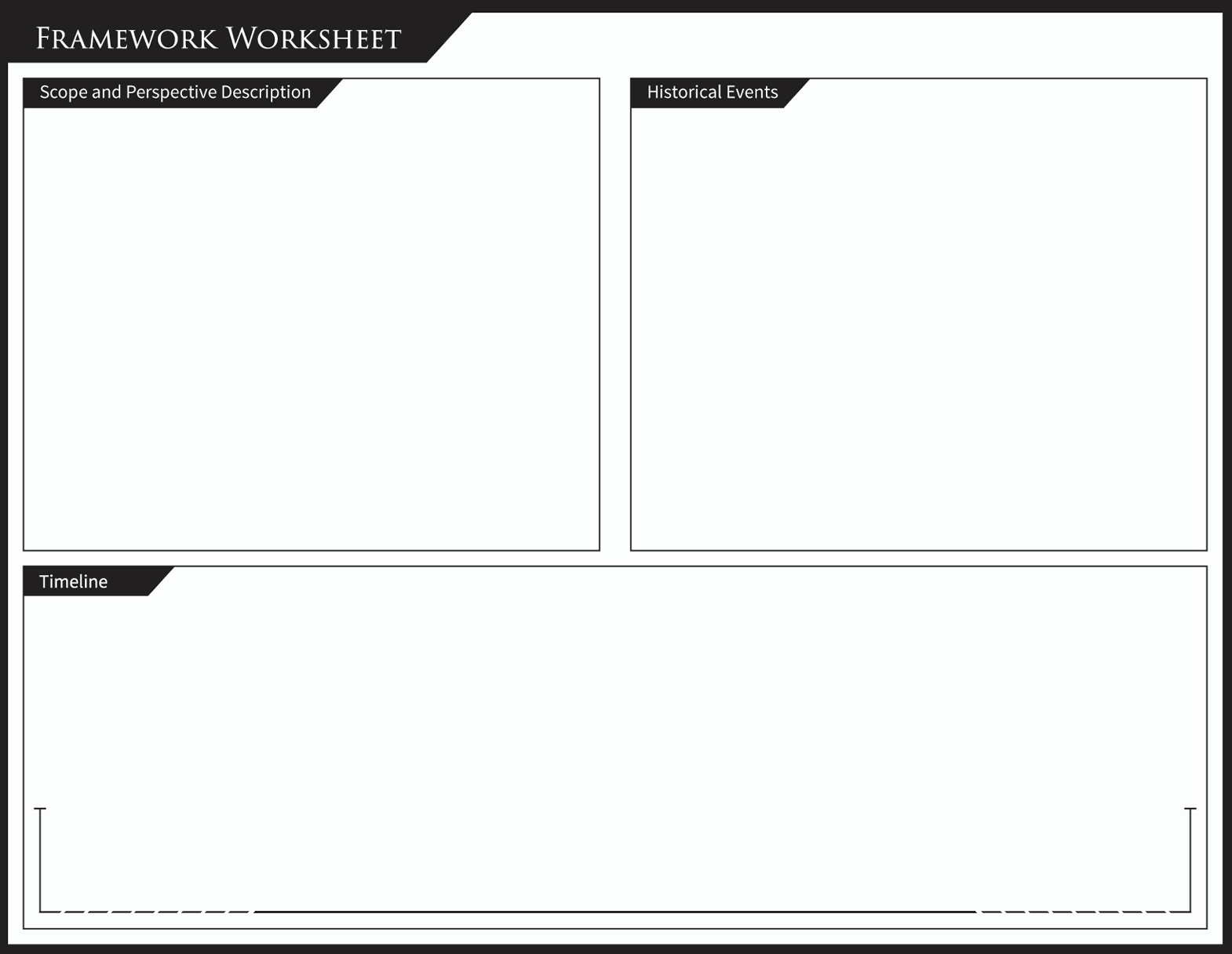RESOURCES
PRINT N’ PLAY COLLABORATIVE WORLDBUILDING CARD DECK
The Collaborative Worldbuilding Deck, described in both Collaborative Worldbuilding for Writers and Gamers as well as The Worldbuilding Workshop, is designed to support all manner of worldbuilding and modeling projects. It consists of three types of cards: category cards, numeric cards, and trending/stable cards. There are 4 broad structural categories (Governance, Economics, Social Relations, Cultural Influences) and 14 substructures beneath them.
Use the deck to randomly generate a world by shuffling and dealing out the numeric and trending cards, one for each subcategory. Then, discuss how to interpret the categories and values, describing how the world functions and identifying points of tension within the society.
WORLDBUILDING STRUCTURES WORKSHEET
The Worldbuilding Structures Worksheet is used to record the values of the structures and substructures of your world. For each substructure, circle the number from 1 to 5 and whether the value is trending or stable. If it’s trending, circle the appropriate directional arrow. For example, if Government Presence is a 3 trending to a 4 in your world, circle the number 3 and the arrow pointing in the direction of number 4.
In the early stages of the worldbuilding project, it’s useful for everyone in the group to have their own copy of the structures’ numeric values and a place to jot down a flurry of notes and ideas. Transferring the values from the card deck to the worksheet also saves valuable tabletop space as you continue to work on your project.
The concepts of structures and substructures are covered in depth in Chapters 5 and 10 in Collaborative Worldbuilding for Writers and Gamers as well as Chapter 7 of The Worldbuilding Workshop.
WORLDBUILDING FRAMEWORK WORKSHEET
The Worldbuilding Framework Worksheet features three boxes: one for recording the world’s scope and perspective; one for writing down major historical events that shaped the world; and one for marking those historical events on a sequential timeline.
These terms and concepts are expanded upon in Chapters 4 and 9 of Collaborative Worldbuilding for Writers and Gamers as well as Chapters 6, 11, and 13 of The Worldbuilding Workshop.
SCOPE AND SCHEDULE WORKSHEET
The Scope and Schedule Worksheet helps keep your worldbuilding project on track and on schedule as your transition to populating the catalog with People, Places, and Things. It’s essentially a spreadsheet used to record which contributor agreed to create which entries and the date by which the contributors agree to complete them. It also ensures that your world will have a diverse set of entries.
Scope and schedule are discussed more in Chapters 9 and 10 of Collaborative Worldbuilding for Writers and Gamers as well as Chapters 6, 9, 11, 12, and 15 of The Worldbuilding Workshop.
World Anvil is a creative online platform that helps you build and organise your world.
Write articles, build your timeline, create interactive maps, link everything together and use imagery, video and audio to create a vibrant catalogue of your world. With options for co-authors and other collaboration features, it’s perfect for collaborative worldbuilding.
“World Anvil’s features integrate so well with the concepts described in The Worldbuilding Workshop and Collaborative Worldbuilding for Writers and Gamers that you’d think we worked on these projects together. Highly recommended!”




